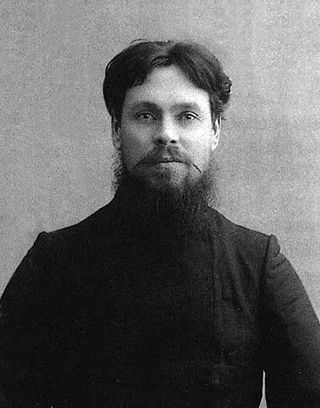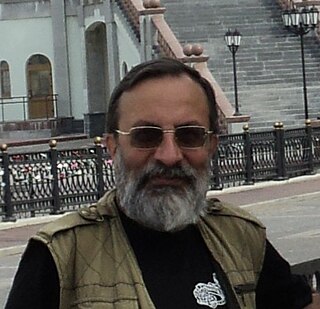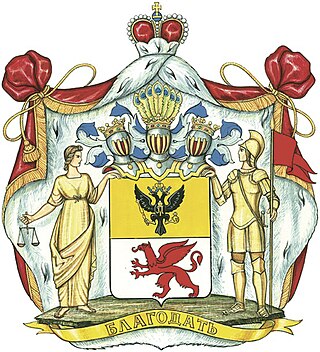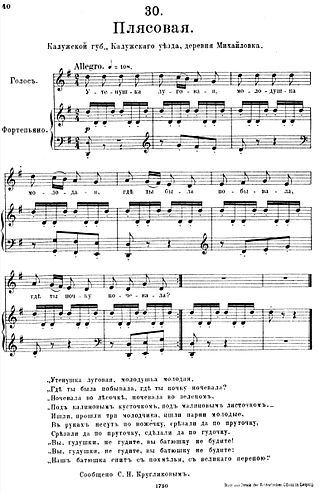Related Research Articles

The Imperial Russian Air Service was an air force founded in 1912 for Imperial Russia. The Air Service operated for five years and only saw combat in World War I before being reorganized and renamed in 1917 following the Russian Revolution.
Oleg Nikolayevich Trubachyov was a Russian linguist. A researcher of the etymology of Slavic languages and Slavic onomastics, he was considered a specialist in historical linguistics and lexicography. He was a Doctor of Sciences in Philological Sciences, an academician of the Russian Academy of Sciences and served as the editor-in-chief of the Etimologiya yearbook. His works are on the etymology of Slavic languages and on East Slavic onomastics.
Lev Davidovich Belkind (Russian: Лев Давидович Белькинд, Профессор, Доктор Технических наук; was a Soviet scientist, engineer and historian; author of numerous publications on the history of science and technology.
Semyon Efimovich Reznik is a Russian writer, journalist, man of letters and historian, noted in particular for his study of the blood libel and the resurgence of Neonazism in Russia. He was the longtime editor of the important Soviet era biographical book series "Lives of Remarkable People" ("ЖЗЛ") to which he also contributed several items as an author.

George Yury Right is a Russian American writer and antisexual activist.
German Pavlovich Yegoshin was a Russian and Soviet painter and art educator, an Honored Artist of the Russian Federation, who lived and worked in Saint Petersburg. He was a member of the Leningrad Union of Soviet Artists, and was regarded as one of the representatives of the Leningrad School of Painting.

Freemasonry in Russia started in the 18th century and has continued to the present day. Russian Freemasonry pursue humanistic and educational purposes, but more attention is given to ethical issues. It was a spiritual community of people united in an effort to contribute to the prosperity of the Motherland and the enlightenment of the people living in it.

Merílo Právednoye or Just Measure is a Russian collection of writings from the late 13th or early 14th century, preserved in the copies of the 14th to the 16th centuries. The name was given in modern literature, taken from the first words of this text: "this books is just measure, true weighing...". Just Measure was written in Church Slavonic and Old Russian.

Ivan Gavrilovich Blinov was a calligrapher and miniaturist, bookmaking master, who worked in the traditional manner.

Vladimir Petrukhin is a Russian historian, archaeologist and ethnographer, Doctor of Historical Sciences, chief research fellow of the Medieval Section in the Institute of Slavic Studies in the Russian Academy of Sciences, professor of Higher School of Economics.

The House of Lopukhin was an old Russian noble family, most influential during the Russian Empire, forming one of the branches of the Sorokoumov-Glebov family.

"Utushka lugovaya" is an ancient Russian folk song.
Mark Mendelevich Persits was a Soviet propagandist of atheism, a scientific worker in the study of problems of religion and atheism, a writer, and a historian of social thought.
Elena Victorovna Zhosul is a Russian journalist, television presenter, political scientist and media expert.
Nikolay Petrovich Krasnikov was active in Soviet academia as a philosopher, historian, and religious scholar.
Alexander Vasilevich Cheryachukin was a Russian general, St. George cavalier, and member of the White movement. During the years of the Russian Civil War, he represented the interests of the Great Don Army in the face of the German armed forces.

The "Russian Idea" is a set of concepts expressing the historical uniqueness, special vocation and global purpose of the Russian people and, by extension, of the Russian state. The Russian Idea acquired a distinct relevance after the dissolution of the Soviet Union and the spiritual vacuum that followed the event.
Manifesto to the Ukrainian people with ultimate demands to the Ukrainian Rada is an official document of the Council of People's Commissars of the Russian Soviet Federative Socialist Republic, prepared by Chairman of the Council of People's Commissars Vladimir Lenin, People's Commissar for Foreign Affairs Leon Trotsky, People's Commissar of Nationalities Joseph Stalin.

The First Snow is a painting by Russian Soviet artist Arkady Plastov. It was created in 1946 in the village of Prislonikha, Karsunsky District, Ulyanovsk Region. The canvas is part of the permanent exhibition and collection of the Tver Regional Art Gallery.
In the culture of Russia, Vasya Pupkin is a placeholder name for an average, random, or unknown (Russian) man, similar to "John Doe" or "Joe Blow".
References
- 1 2 М. Н. Свистунов. "РОССИЙСКАЯ ЦИВИЛИЗАЦИЯ И ПРАВОСЛАВИЕ: ДИАЛЕКТИКА ИХ ВЗАИМООТНОШЕНИЙ И ПЕРСПЕКТИВЫ РАЗВИТИЯ" [Russian civilisation and Orthodoxy: the dialectic of their mutual relationships and prospects of development]. mosgu.ru (in Russian). Moscow University for the Humanities . Retrieved 2020-02-26.
'Русская цивилизация' — это характеристика цивилизации по основополагающему, коренному народу, ее создавшему - русскому народу, всегда составляющему подавляющее большинство населения страны [Translation: 'Russian civilisation is the characteristic of a civilisation according to the underlying native people which has founded it - the Russian people, which has always constituted the overwhelming majority of the population of the country].
- ↑ Лексин Владимир Николаевич (2018). "Русская цивилизация и русский народ". Журнал Института Наследия. 2 (13) (Журнал Института Наследия ed.): 2.
- ↑ Харченко Л. Н. (2014). Природа и цивилизация. Профильное обучение. 10–11 классы. Directmedia. pp. 91–92. ISBN 978-5446098354.
- ↑ Владимир Лексин (2018-01-11). "Русская цивилизация: феномен или фантом?" (in Russian). Retrieved 2020-02-24.
- ↑ A. L. Kroeber (2011). Checklist of Civilizations and Culture. Transaction Publishers. p. 53. ISBN 978-1412818537.
- ↑ Горелов Анатолий Алексеевич (2017). "Ф. М. Достоевский: русская идея и русский социализм". Знание. Понимание. Умение (1) (Знание. Понимание. Умение ed.): 50–66.
- ↑ Кривопусков Владимир Викторович (2016). "Цивилизационные идентичности Запада и Востока: место и роль "Русского мира"". Гуманитарий Юга России. 20 (4) (Гуманитарий Юга России ed.): 224–235.
- ↑ Vadim Joseph Rossman (2002). Russian Intellectual Antisemitism in the Post-Communist Era. U of Nebraska Press. p. 102. ISBN 0803239483.
- ↑ Yuri Glazov (2012). The Russian Mind Since Stalin's Death. Springer Science & Business Media. p. 222. ISBN 978-9400953413.
- ↑ Cholakova, Rumyana (2009-01-01). "Chinese Spirit, Russian Soul, and American Materialism: Images of America in Twentieth-Century Chinese and Russian Travelogues". All Theses and Dissertations (ETDs). doi:10.7936/K79G5JVK.
Sources
- Oxford Dictionary of the Christian Church (3rd rev. ed.), Oxford University Press, 2005, ISBN 978-0-19-280290-3